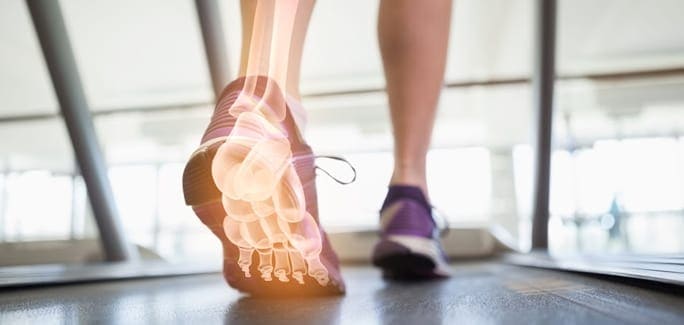
For athletes, runners and fitness enthusiasts, nothing is worse than foot pain that keeps you from participating in the activities you love. In many cases, foot pain goes away with sufficient rest and a change of shoes. But when you have lingering pain in the arch or your foot, it could signal a serious condition that may worsen over time, leading to injury or disability.
Your feet are designed to walk, run, jump and stabilize your body when standing and moving. They provide important feedback to your brain about your body’s position relative to gravity, and respond to disruptions in balance by redistributing your weight. Despite their ability to withstand high force loads, even the strongest feet can succumb to repetitive overuse.
Foot anatomy can be understood in terms of three subsystems:
All three subsystems interact to provide stability and enable the foot to adapt to the ever-changing demands of physical activity.
Ongoing pain in the arch of the foot can originate from a number of conditions. Some common causes of foot arch pain include:
There are some rare conditions that cause pain in the arch of the foot that are easily overlooked:
– Plantar fibroma occurs when a small nodule located in the plantar fascia causes pain during walking. This condition can be diagnosed with high frequency diagnostic ultrasonography. Occasionally, if the fibroma is large, this painful nodule can be palpated on the bottom of your foot.
– Master Knot of Henry syndrome is caused by inflammation due to excessive friction at the intersection of the FDL and FHL tendons, near the navicular bone. This can irritate the nearby medial plantar nerve and cause stabbing pain in the arch of the foot, as well as numbness and tingling.
– Tendinosis of the peroneus longus and tibialis anterior tendons. When irritated, these tendons infrequently cause arch pain.
If you are suffering ongoing arch pain, do not ignore it. The foot pain specialists at NYDNR use diagnostic real-time ultrasound to accurately diagnose the underlying cause of arch pain, which enables them to quickly devise a targeted heel pain treatment plan.
Treatment strategies may include:
At NYDNR, we combine professional expertise with innovative therapies and state-of-the-art technologies to provide our patients with the very best care for rehabilitation of foot arch pain.
Dr. Lev Kalika is a world-recognized expert in musculoskeletal medicine. with 20+ years of clinical experience in diagnostic musculoskeletal ultrasonography, rehabilitative sports medicine and conservative orthopedics. In addition to operating his clinical practice in Manhattan, he regularly publishes peer-reviewed research on ultrasound-guided therapies and procedures. He serves as a peer reviewer for Springer Nature.
Dr. Kalika is an esteemed member of multiple professional organizations, including: